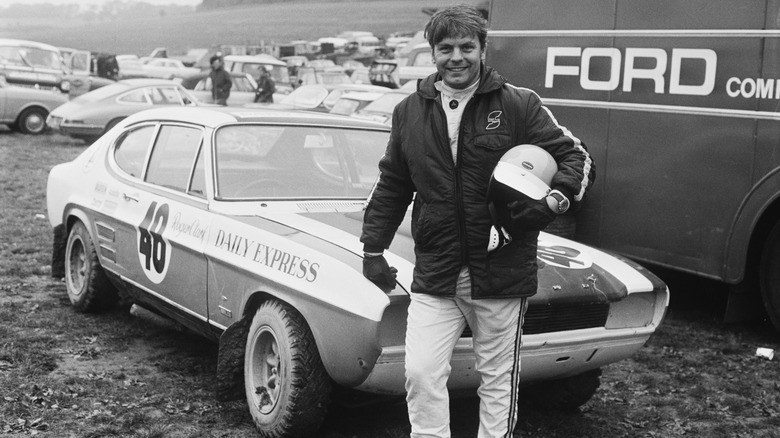
Express/Getty Images
Motorsports incorporate a wide array of events that have transformed into a $5.51 billion global market in 2023, per MarketDataForecast.com. Rally racing wasn’t always the attractive sport it is now, with the late 1960s seeing a dip in enthusiasm. Prior to the FIA World Rally Championship that formed in 1973, rallying events were held, but the way the events were scored confused many fans — making competition outcomes more complex and likely less fun.
Fortunately, a new type of contest was born in 1967 called Rallycross, and it started taking Europe and the U.K. by storm. For those unfamiliar, Rallycross takes place on mixed surfaces that include both pavement and dirt. Cars compete directly in contained tracks that offer spectators stadium style seating to catch all the action.
Shortly after this new motorsport was taking off, automaker Ford’s U.K. division wanted to craft a vehicle to compete in this burgeoning Rallycross event. The Capri 4WD was the uneven, but powerful result. The Mustang paved the way for Ford’s overlooked European pony car, but the Capri had a style all its own. However, even under the expert control of famed British rally driver Roger Clark, the rallycross Ford Capri 4WD exhibited excessive understeer, with a potent engine that was difficult to reign in.
Cornering was unpredictable
In terms of navigating a circuit, there are two extremes you want to avoid: Understeer, and oversteer, when handling. The Ford Capri 4WD struggled with understeer; which is when the driver turns the wheel going into a corner, but the front tires lose grip, causing the turn to go wide. In addition, understeer can present itself when the driver is aggressive on the gas pedal halfway through the corner, and the front tires slip and cause loss of traction.
Obviously, professional motorsport drivers complete countless precision moves behind the wheel during an event, so couldn’t they just compensate for the Capri 4WD’s quirks? When speaking on this rallycross car from Ford, seasoned pro driver Roger Clark exclaimed, «They had minds of their own and they kept changing their minds too often.»
Unfortunately, Ford’s Capri 4WD ended up being quite a chore to drive, and sentiments like these were coming from a championship winning driver, hand-picked by the automaker themselves.
Loads of power, but control was lacking even with 4WD
The more potent 1970-1971 Capri 4WD came equipped with upgraded aluminum cylinder heads and fuel injection, producing 252 horsepower. By all accounts this rallycross car dominated in the straightaway’s, rocketing off the starting line with gusto. This Ford model even managed to win a trio of races in its first season, despite the added time penalties for four-wheel drive.
However, the extra power became a hinderance on a winding circuit that featured dirt, mud, and asphalt. To put up the best lap times and stay ahead of other cars, it’s crucial to navigate a rallycross course quickly by taking the shortest racing line through curves. Deftly navigating sharp turns might look effortless, but it requires varying amounts of braking, steering, acceleration, and balance. The Ford Capri 4WDs brawny engine contributed to understeer as it was challenging to keep under control and added to the weight of the car. Roger Clark, who later became a staunch critic of four-wheel drive in Rallycross, remarked in his book that «Four-wheel drive was splendid from the start line, but in muddy corners it was a different story.»
Although the Capri 4WD was ultimately shelved in the early ’70s, it attracted an audience of five million television viewers, raised the profile of rallycross across the globe, and popularized drivers like Roger Clark. Ford went on to create one of the best rally cars ever built — the Escort RS 1800 MkII — that took 17 wins during its run.